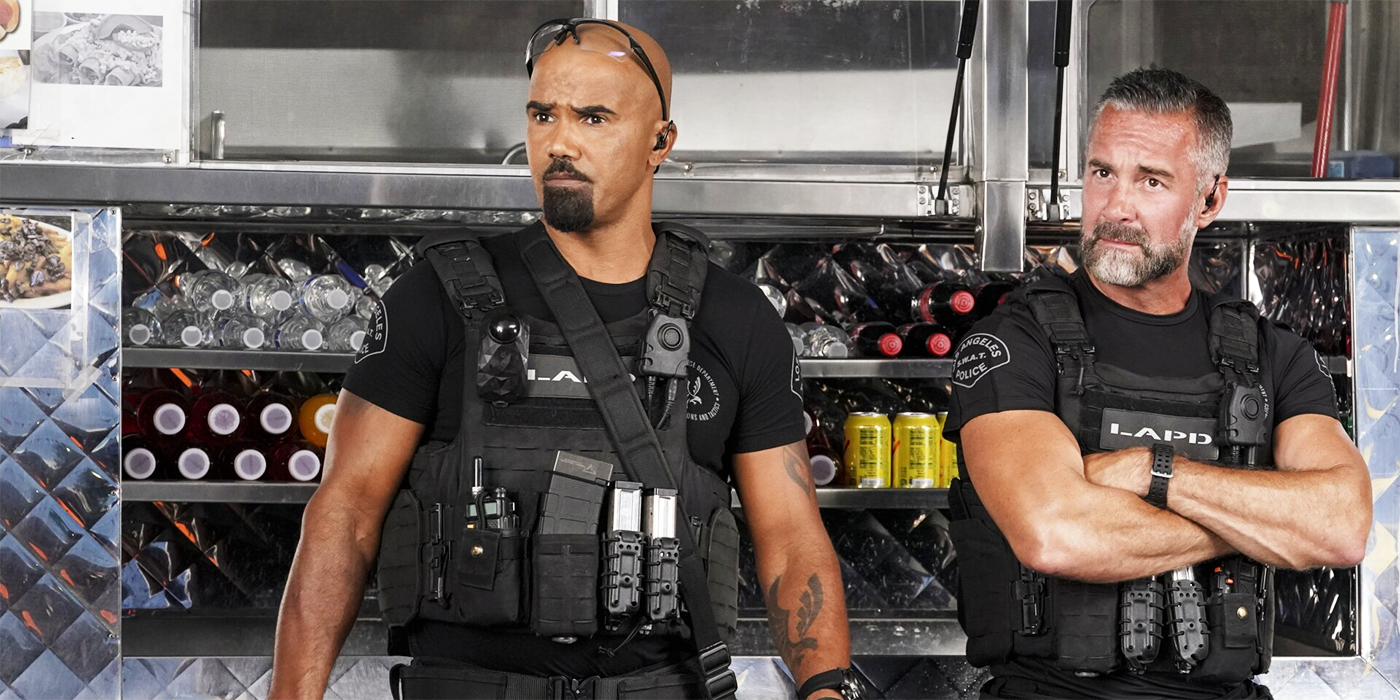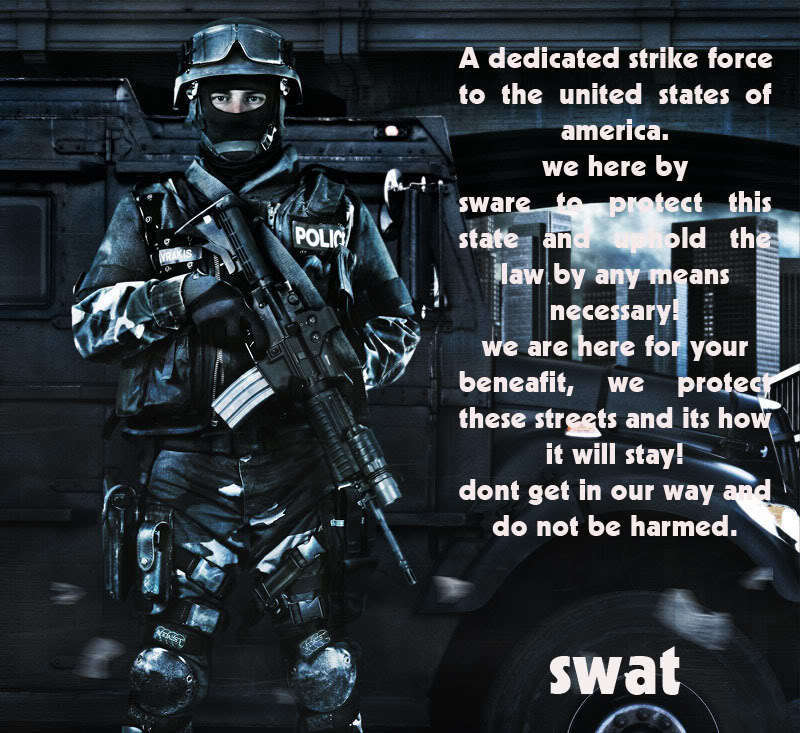SWAT is a term frequently encountered in movies, news reports, and discussions about law enforcement. But what does SWAT mean, and why are SWAT teams so crucial in modern policing? This article aims to explore the meaning of SWAT, its origins, roles, and responsibilities. Whether you're curious about SWAT's history or want to understand its role in society, this guide will provide all the answers you need.
SWAT stands for Special Weapons and Tactics, and it refers to elite tactical units within law enforcement agencies. These specialized teams are trained to handle high-risk situations that exceed the capabilities of regular police officers. The formation of SWAT teams marked a significant evolution in policing strategies, enabling law enforcement agencies to respond effectively to complex threats.
In today's world, SWAT teams play a critical role in ensuring public safety. Understanding what SWAT means and the responsibilities of these units can help demystify their operations and appreciate their importance. From hostage rescues to counter-terrorism efforts, SWAT teams are at the forefront of handling dangerous scenarios. Let's delve deeper into the world of SWAT and uncover the details behind this vital aspect of modern law enforcement.
Read also:Adekunle Gold Net Worth A Deep Dive Into The Wealth Of The Nigerian Music Star
Table of Contents
- The Origin of SWAT Teams
- What Does SWAT Mean?
- Roles and Responsibilities of SWAT Teams
- SWAT Training and Selection Process
- Equipment Used by SWAT Teams
- SWAT Operations and Deployment Scenarios
- Challenges Faced by SWAT Teams
- Public Perception of SWAT
- SWAT Deployment Statistics and Data
- The Future of SWAT Teams
The Origin of SWAT Teams
SWAT teams were born out of necessity in the 1960s when urban unrest and violent crimes increased significantly in the United States. The Watts Riots in Los Angeles in 1965 highlighted the need for a specialized response unit capable of handling large-scale disturbances and violent situations. Chief Daryl Gates of the Los Angeles Police Department (LAPD) pioneered the creation of the first SWAT team, which became a model for other law enforcement agencies worldwide.
Early Development of SWAT
Initially, SWAT teams were designed to address civil unrest and riots. However, as criminal activities evolved, so did the role of SWAT. By the 1970s, SWAT teams began handling hostage situations, bank robberies, and other high-risk operations. The success of early SWAT deployments encouraged other cities and countries to establish their own tactical units.
What Does SWAT Mean?
SWAT stands for Special Weapons and Tactics. These units are elite teams within police departments or law enforcement agencies tasked with handling situations that are too dangerous or complex for regular officers. SWAT teams are trained in advanced tactical techniques and equipped with specialized weapons and gear to ensure successful mission outcomes.
Key Characteristics of SWAT
- Highly trained personnel with expertise in tactical operations.
- Equipped with specialized weapons, armor, and tools for high-risk scenarios.
- Capable of executing precise and coordinated actions in critical situations.
Roles and Responsibilities of SWAT Teams
The primary role of SWAT teams is to handle high-risk situations that regular police officers cannot manage effectively. These situations include hostage rescues, barricaded suspects, counter-terrorism operations, and serving high-risk warrants. SWAT teams are also responsible for protecting dignitaries and providing security during major events.
Specific Responsibilities
- Rescuing hostages from dangerous situations.
- Neutralizing threats posed by armed suspects.
- Executing high-risk search and arrest warrants.
- Providing security during large-scale events or emergencies.
SWAT Training and Selection Process
Joining a SWAT team requires extensive training and rigorous selection processes. Candidates must demonstrate exceptional physical fitness, mental resilience, and tactical skills. The training regimen for SWAT officers is demanding and covers a wide range of disciplines, including firearms proficiency, negotiation tactics, and urban warfare techniques.
Key Components of SWAT Training
- Advanced firearms training, including precision shooting and tactical maneuvers.
- Close-quarter combat techniques and building entry procedures.
- Hostage rescue and negotiation strategies.
- Physical conditioning and endurance training.
Equipment Used by SWAT Teams
SWAT teams rely on specialized equipment to perform their duties effectively. This includes advanced firearms, body armor, breaching tools, and surveillance technology. The equipment used by SWAT teams is designed to enhance their operational capabilities and ensure the safety of both officers and civilians.
Read also:Melissa Gorga Net Worth A Deep Dive Into Her Wealth And Success
Common SWAT Equipment
- Tactical rifles, pistols, and shotguns.
- Ballistic vests and helmets for protection.
- Breaching tools for forced entry into buildings.
- Surveillance drones and thermal imaging devices.
SWAT Operations and Deployment Scenarios
SWAT teams are deployed in a variety of high-risk scenarios, each requiring a unique approach and set of tactics. These operations can range from hostage rescues to counter-terrorism efforts. Understanding the deployment scenarios helps illustrate the versatility and importance of SWAT teams in modern law enforcement.
Examples of SWAT Deployments
- Hostage situations in commercial or residential areas.
- Barricaded suspects refusing to surrender.
- Counter-terrorism operations involving potential threats.
- High-risk warrant service in dangerous neighborhoods.
Challenges Faced by SWAT Teams
Despite their advanced training and equipment, SWAT teams face numerous challenges in their operations. These challenges include balancing public safety with individual rights, dealing with unpredictable situations, and maintaining operational integrity under extreme pressure. Addressing these challenges requires continuous training and adaptation to evolving threats.
Key Challenges
- Maintaining public trust while executing high-risk operations.
- Handling unpredictable situations with minimal information.
- Dealing with the psychological impact of high-stress environments.
Public Perception of SWAT
Public perception of SWAT teams can vary widely depending on media portrayal, community interactions, and personal experiences. While many view SWAT as a vital component of public safety, others may question the necessity and frequency of SWAT deployments. Building trust and transparency between SWAT teams and the communities they serve is essential for fostering positive relationships.
Improving Public Perception
- Engaging in community outreach programs to educate the public about SWAT roles.
- Providing transparent reporting on SWAT deployments and outcomes.
- Encouraging open dialogue between law enforcement and community members.
SWAT Deployment Statistics and Data
Data and statistics provide valuable insights into the frequency and nature of SWAT deployments. Studies show that SWAT teams are increasingly being utilized for a wide range of operations beyond traditional high-risk scenarios. Understanding these trends can help inform policy decisions and resource allocation within law enforcement agencies.
Key Statistics
According to a report by the CATO Institute, SWAT deployments have increased significantly over the past few decades, with over 50,000 deployments annually in the United States alone. The majority of these deployments involve serving drug-related warrants, highlighting the evolving role of SWAT teams in modern policing.
The Future of SWAT Teams
As technology advances and new threats emerge, the role of SWAT teams will continue to evolve. The integration of drones, artificial intelligence, and other cutting-edge technologies will enhance SWAT capabilities while raising ethical and operational considerations. Staying ahead of these developments will be crucial for maintaining the effectiveness and integrity of SWAT teams in the future.
Trends in SWAT Evolution
- Increased use of technology for surveillance and threat assessment.
- Focus on de-escalation techniques to minimize the use of force.
- Adaptation to emerging threats such as cyberterrorism and domestic extremism.
Conclusion
In conclusion, understanding what SWAT means and the critical role SWAT teams play in modern law enforcement is essential for appreciating their contributions to public safety. From their origins in response to urban unrest to their current roles in handling complex threats, SWAT teams have proven to be indispensable assets in maintaining order and protecting communities.
We encourage readers to share their thoughts and experiences regarding SWAT teams in the comments below. Additionally, explore other articles on our site to learn more about law enforcement, public safety, and related topics. Together, we can foster a better understanding of the challenges and responsibilities faced by those who serve to protect us.



